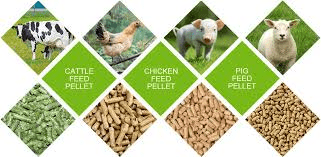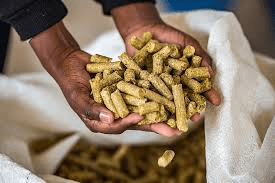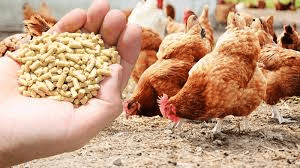This article outlines the role of animal feed evaluation in animal production, providing an overview of feed evaluation methods, current feeding systems and empirical and mechanistic modelling, and attempts to link these methods, systems and models.
The Need for Animal Feed Evaluation
Animal production is concerned with providing food (and clothing) of animal origin for man. Animal production science, which underpins this goal, provides the rational basis for livestock management practices.
Feed evaluation concerns the use of methods to describe animal feedstuffs with respect to their ability to sustain different types and levels of animal performance. In feed evaluation, emphasis is placed on determining specific chemical entities, although the physical characteristics of the feed are also important.
Subsequently, the acquired data are used, with appropriate animal indices, in feeding systems comprising suitable predictive routines (normally based on empirical equations) to determine whether a desired level of animal performance can be achieved from various diets.
The practical goal of feed evaluation is to optimize the efficiency of feed utilization, animal output and, ultimately, financial return to the producer.
In this context, it is important to establish the potential of major feedstuffs and the need for appropriate supplements in order to overcome nutritional deficiencies and raise the level of performance.
With respect to the animal, the level of performance will be dictated by the amount of feed voluntarily consumed and the efficiency of utilization of the major nutrients, namely energy and protein. Furthermore, the composition of the animal products.
Methods Used in Animal Feed Evaluation

1. Laboratory Chemical Analysis
The analysis of ruminant feeds generally involves determining the dry matter (DM), organic matter (OM), structural carbohydrate (fibre or non-starch polysaccharide, NSP), soluble carbohydrate, starch (where applicable) and crude protein (CP) content of the feedstuff.
Silages require further analysis, notably for their pH, ammonia N and organic acid contents; recent research suggests that their true protein content should also be characterized.
The DM of a feedstuff is usually determined by oven drying at 60 or 100°C, whilst silages require special treatment (e.g. toluene DM determinations) due to their high content of volatile organic acids; thus DM is usually determined by distillation.
OM is determined by dry ashing (at 500°C until all the carbon has been removed); the residue or ash can be used to determine the content of individual mineral elements in the feedstuff.
Read Also: How to Make a Balanced Fish Feed Formulation for Fishes
The most widely used methods for analyzing the structural constituents, or fibre, are the detergent extraction methods of Van Soest.
These methods involve extraction of plant biomass with neutral detergent to leave a fibrous residue of predominantly cellulose, hemicellulose and lignin (i.e. the neutral detergent fibre or NDF of plant cell walls) or with acid detergent to leave a residue of cellulose and lignin (i.e. the acid detergent fibre or ADF of plant cell walls).
As these are gravimetric procedures, the exact composition of the NDF and ADF residues is not known.
The fibre content of a feedstuff may be described more accurately by NSP analysis, whereby alditol acetate derivatives of carbohydrate monomers derived from acid hydrolysis of washed, polymeric, de-starched samples are quantified by gas chromatography.
With NSP analysis in addition to obtaining details of the chemical composition of the fibre, the values measured are independent of food processing and storage, and hence the amounts present can be quantified more accurately.

Crude protein content is calculated from the nitrogen (N) content, determined by the Kjeldahl procedure involving acid digestion and distillation.
More recently, Dumas methods, involving combustion and determination of released gaseous N, are being used.
Ammonia N in fresh silage is determined on water extracts by either distillation or use of specific ion-sensitive electrodes.
These methods measure N rather than protein; the quantity of N is therefore multiplied by 6.25 (assuming the N is derived from protein containing 16% nitrogen) to obtain an approximate protein value.
In recent years, near infrared reflectance spectroscopy (NIRS) has also been adopted for determining the composition of feedstuffs.
In terms of accuracy, precision, speed and unit cost of analysis, the NIRS technique, provided it is calibrated correctly, is preferable to traditional laboratory methods.
However, the technique ultimately relies on a set of stan ard samples whose composition has been determined by traditional methods.
Read Also: Classification of Animal Feedstuffs
2. Digestibility

In addition to chemical composition, several methods have been developed to characterize feedstuffs in terms of their digestibility.
These comprise in vivo, in situ and in vitro methods. In vivo measurements provide the standard measure of digestibility as they represent the actual animal response to a dietary treatment.
However, such trials cannot be considered routine in most laboratories, and cannot be carried out for all the possible feeding situations found in practice.
Therefore, a number of in vitro and in situ methods (e.g. batch culture digestibility, enzyme digestibility, gas production, polyester bag) have been developed to estimate digestibility and the extent of ruminal degradation of feedstuffs, and to study their variation in response to changes in rumen conditions.
Thus in vitro and in situ techniques may be used to study individual processes, providing information about their nature and sensitivity to various changes. This information is of great importance in the development of mechanistic models.
Read Also: Guide on How to Produce Toilet Wash
